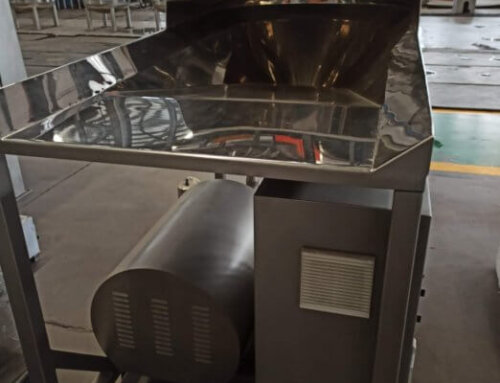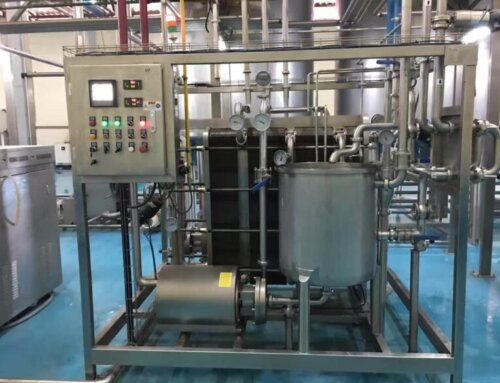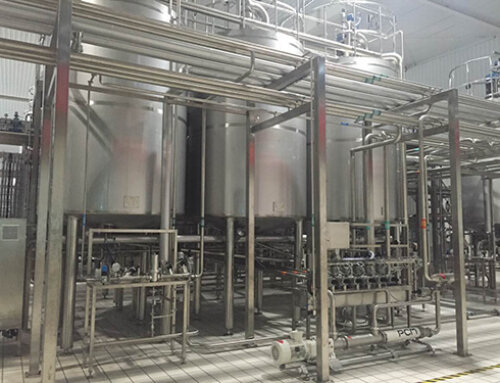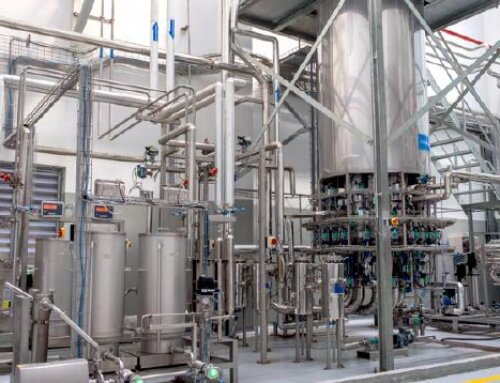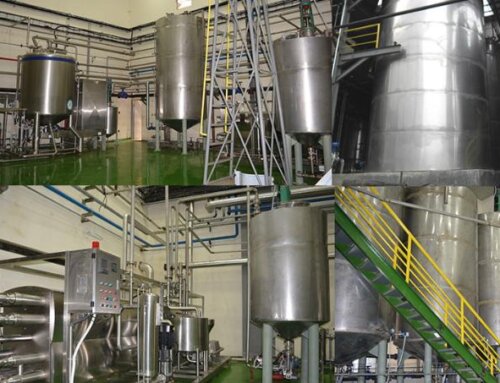As an important part of conveying fluid media, beverage pumps play a very important role in the food and beverage processing field. Common beverage pumps include centrifugal pumps, rotor pumps, and screw pumps. The main parameters of the pump are material viscosity, flow capacity, lift, power and rotor speed. Today we will give a brief introduction of three pumps character and difference.
Centrifuge Pump
The centrifugal pump is a vane pump. All parts in contact with the material, such as the pump body, pump cover, and impeller, are made of SUS316L or SUSI304 stainless steel; The motor uses the ABB brand, with protection class IP55.F insulation and wide voltage structure. It is suitable for conveying low-viscosity materials such as milk, juice, syrup, high-purity water and wine.
Before the centrifugal pump is started, the pump is filled with fluid, the motor drives the impeller to rotate at a high speed, and the blades drive the liquid to rotate, generating centrifugal force, and the liquid gains pressure and speed capability to achieve the purpose of conveying fluid.
The sanitary centrifugal pump is of single stage, single suction and open impeller. The casing and impeller are carefully designed, so that the resistance loss is small and the sanitary dead angle is completely eliminated.
Because of its special structure and easy cleaning, it has excellent sanitary performance, which can meet the pumping products with sanitary requirements.
It consists of a standard motor, impeller, casing, stainless steel motor protective cover, adjustable stainless steel leg, and sanitary mechanical seal. According to the different conveying media, the mechanical seal material can be selected from silicon carbide and cemented carbide.
Technical parameter

Rotor Pump
The rotor pump one of the positive displacement pumps, it can be also called sanitary rotor lobe pump, there are two cam rotors with the same shape that mesh with each other and rotate. During the rotation, the two rotors will form a vacuum chamber, the vacuum chamber sucks in materials and discharges them at the outlet. The parts of the stepless speed regulating rotor pump are made of 304/316 stainless steel and other materials that meet sanitary standards. It is suitable for conveying fluids that is easy to generate foam, high viscosity and includes particles during transportation, such as tomato ketchup, syrup, cheese, cream, fruit puree and paste. The rotor pump has following features:
- The pump chamber inlet and outlet adopts a large opening design to effectively reduce cavitation and smooth entry of high-viscosity materials;
- The built-in structure and balanced mechanical seal are used to meet CIP cleaning conditions. The pump chamber can be replaced without disassembling the pump chamber, which effectively improves maintenance efficiency;
- The modular design gearbox, the inlet and outlet can be adjusted left and right and up and down at will, and the inlet and outlet can be installed horizontally or vertically;
- According to different outlet pressures, 2, 3, or 4 sets of bearing supports can be selected;
- The high-strength support seat adopts a split design;
- The sanitary built-in mechanical seal has no dead angles, is easy to disassemble and assemble, and can achieve online maintenance;
- The specially designed rotor significantly improves the efficiency in the transportation of low, medium, and high-viscosity materials, and meets CIP online cleaning;

Screw Pump
The screw pump with internal meshing is a rotor type positive displacement pump.it is composed of stator and rotor, spiral interference fit of the two form a continuous seal cavity, achieved by the rotation of the rotor motion transmission of media. It has a simple structure, uniform flow, small disturbance, carrying capacity, etc. It can transport all kinds of mixed impurities and solid particles or fibers, and can also transport all kinds of corrosive substances and high-viscosity substances and fluids, such as tomato paste, dairy cream, fruit pomace, crushed fruit pulp.

The difference of centrifuge pump, rotor pump and screw pump
| Parameter | Centrifuge Pump | Rotor Pump | Screw Pump |
|---|---|---|---|
| Cost | Low | Medium | High |
| Type | Power pump | Volume pump | Volume pump |
| Flow Rate | 1.5-2500m3/h | 0-1400m3/h | 0-2000m3/h |
| Lift | 0-150m(single stage),0-1200m(mutli-stage) | 0-150m | 0-60m(one stage),0-360m(mutli-stage) |
| Efficiency | 40%-80% | 70%-95% | 40%-60% |
| Rotor speed | 0-3000rpm | 0-500rpm | 0-960rpm |
| Self suction | NA | ≤9m | ≤6m |
| Material solid size | ≤ 2mm, <150mg/L | ≤ 150mm | ≤50mm |
| Material Viscosity | ≤ 100CP | 0-10000CP | 0-100000CP |
| Temperature | -20-120℃ | -40-200℃ | -15-200℃ |
| Conveying material | Low viscosity such as water, juice and milk | Medium viscosity such as fruit paste, puree. | High viscosity products like tomato paste, fruit jam, cream, solid content pulp. |
| Conveying direction | NA | Reversible | Non-reversible |
